
This is the car I wanted when I was 18 back in 1973. It makes me feel like a kid every time I drive it.
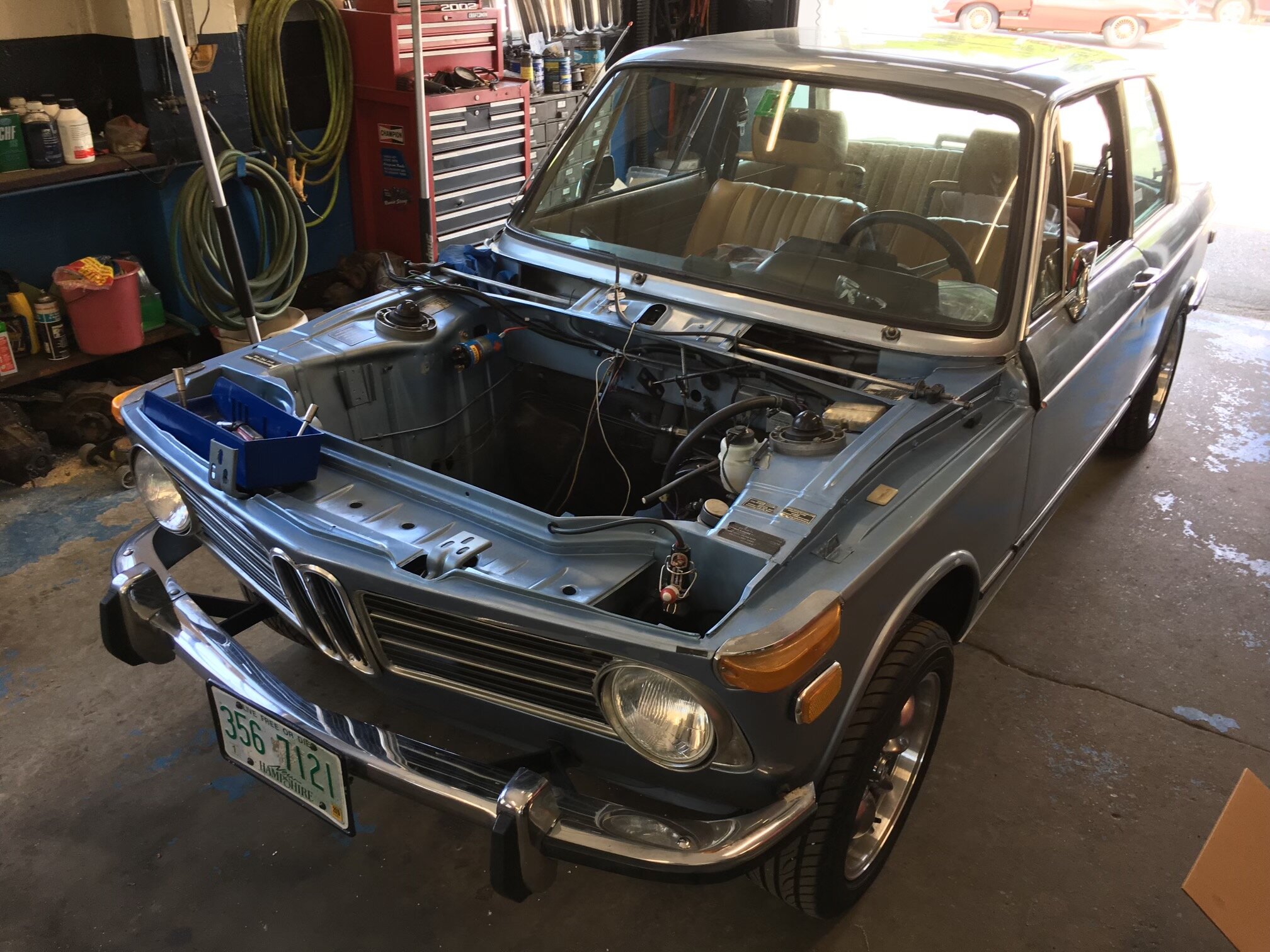
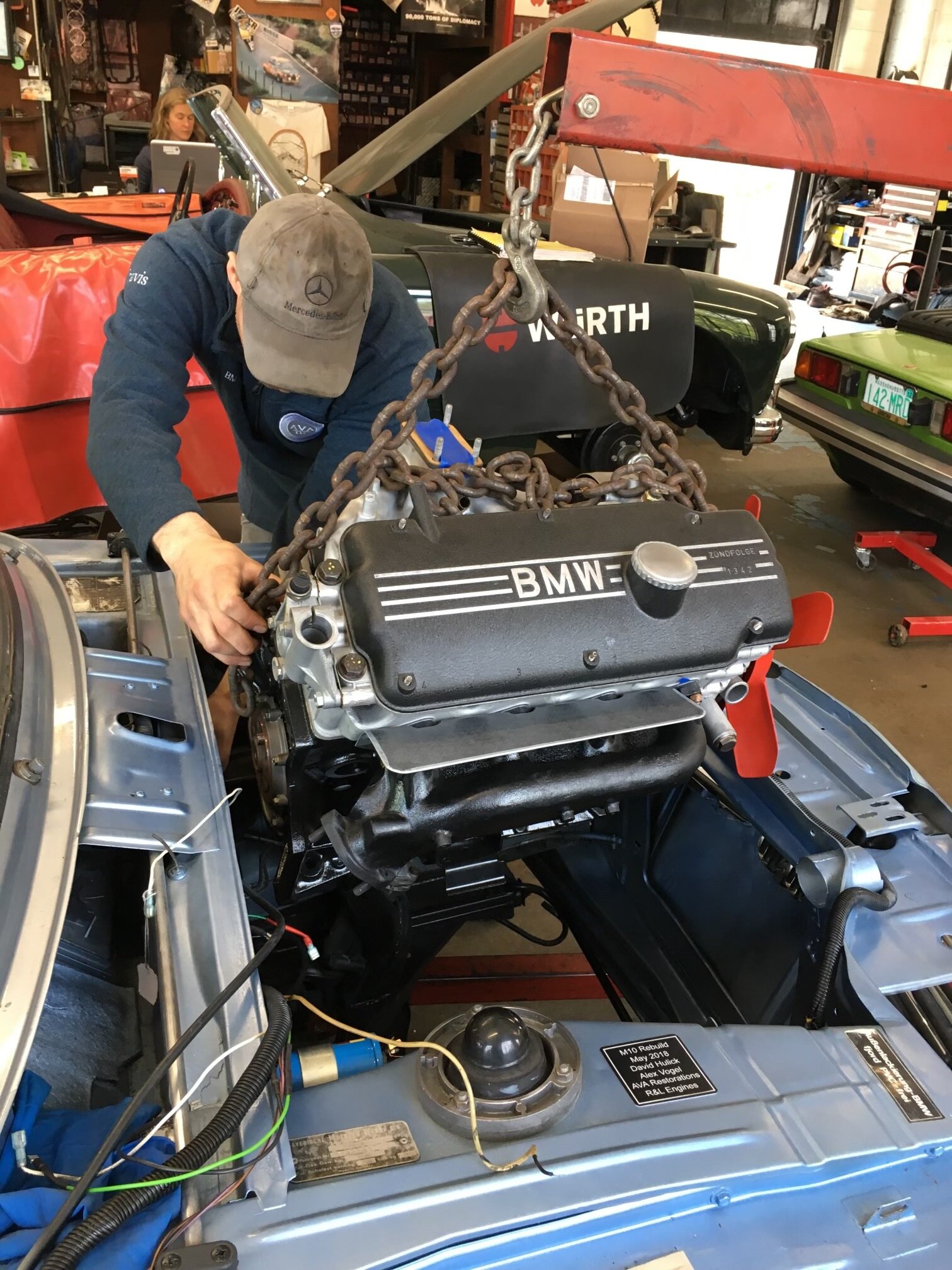
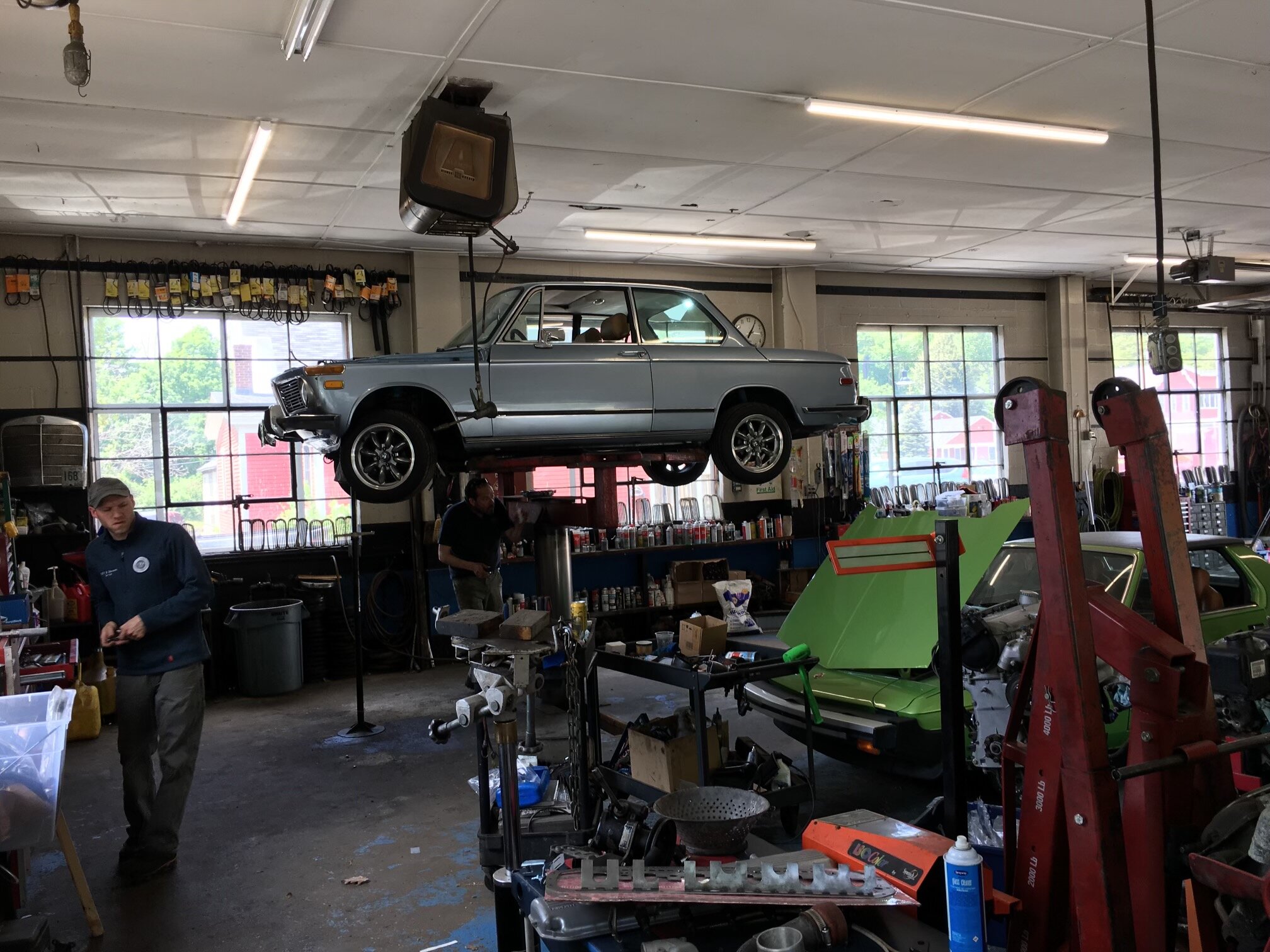
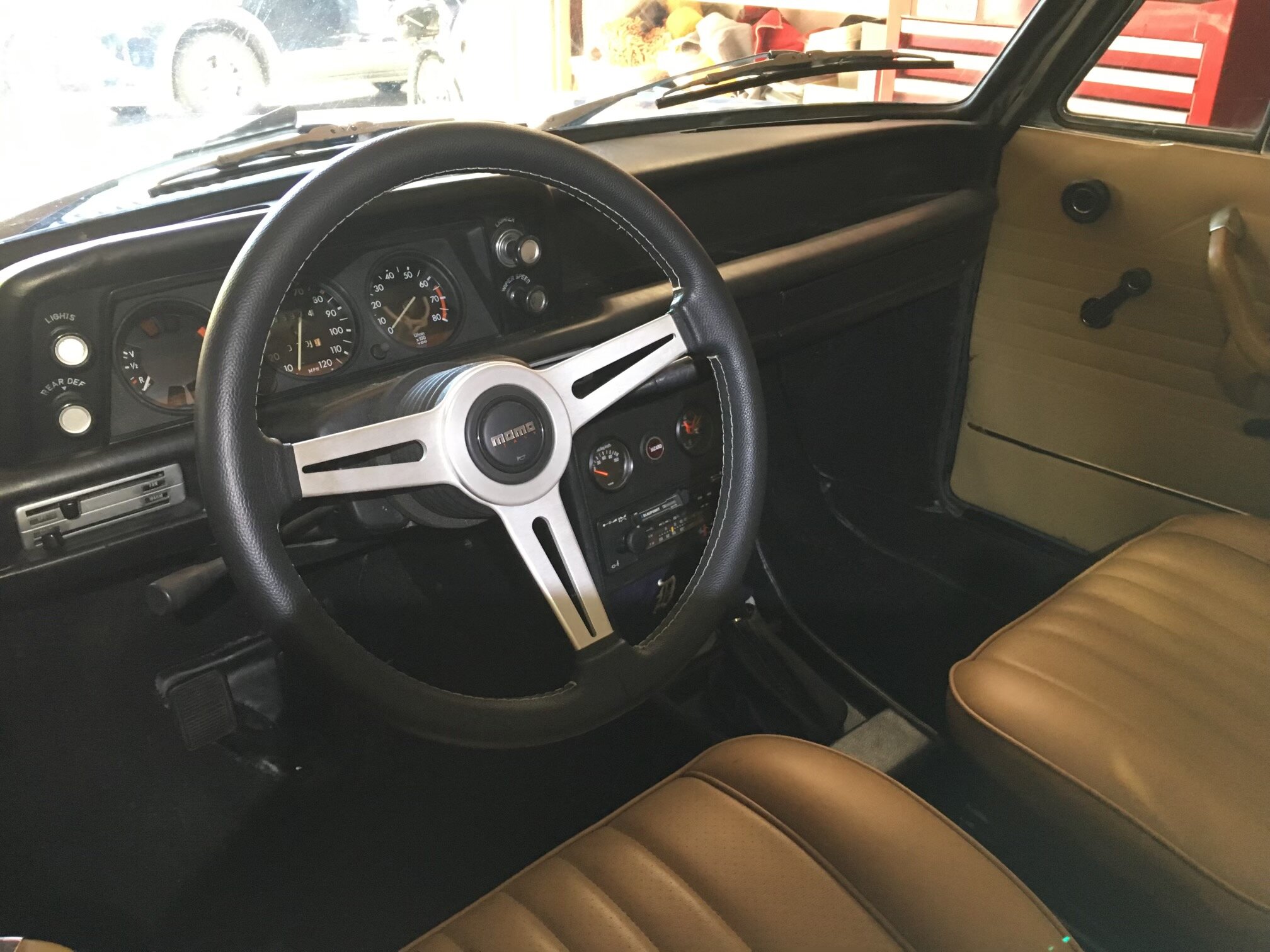
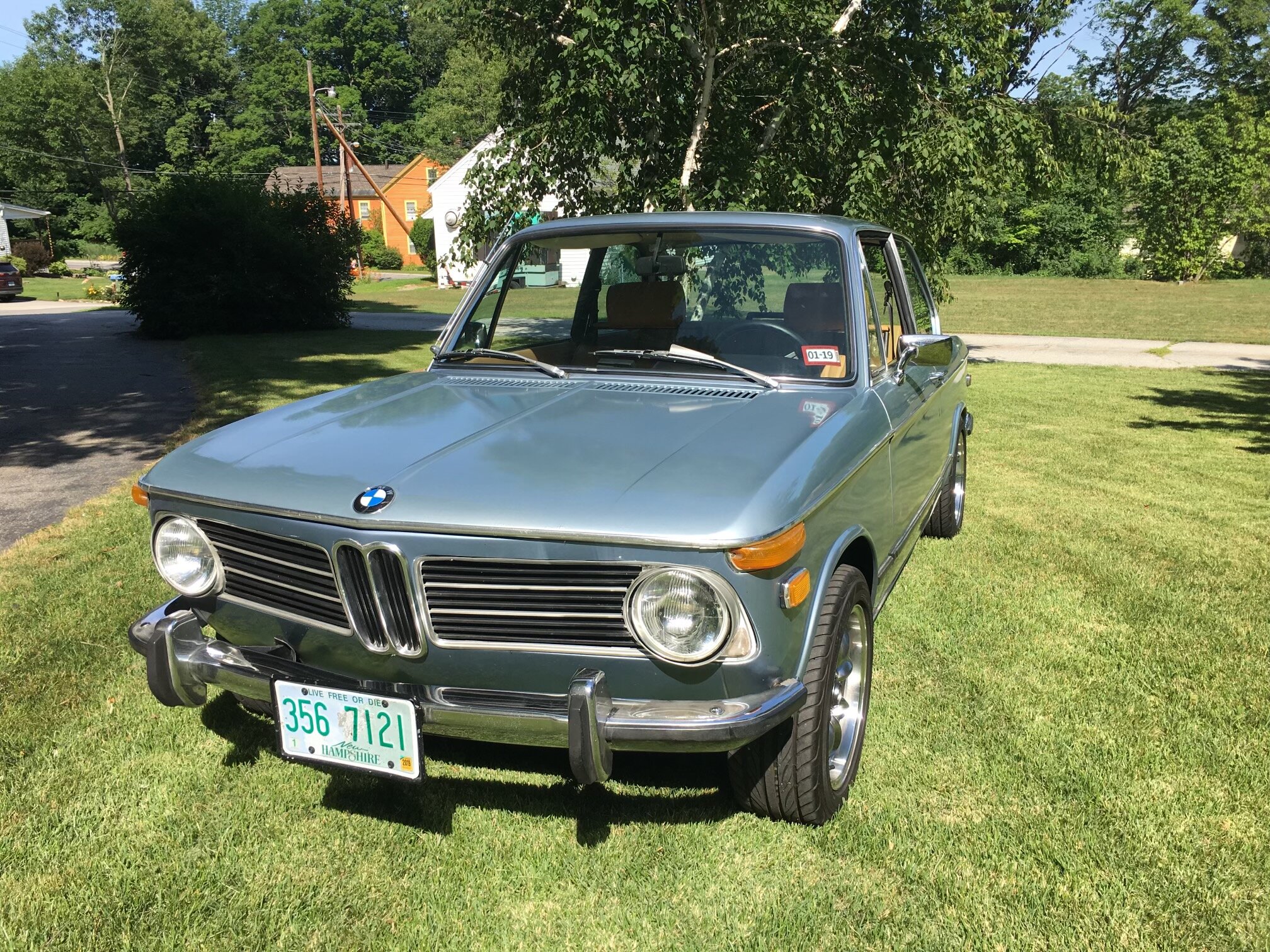
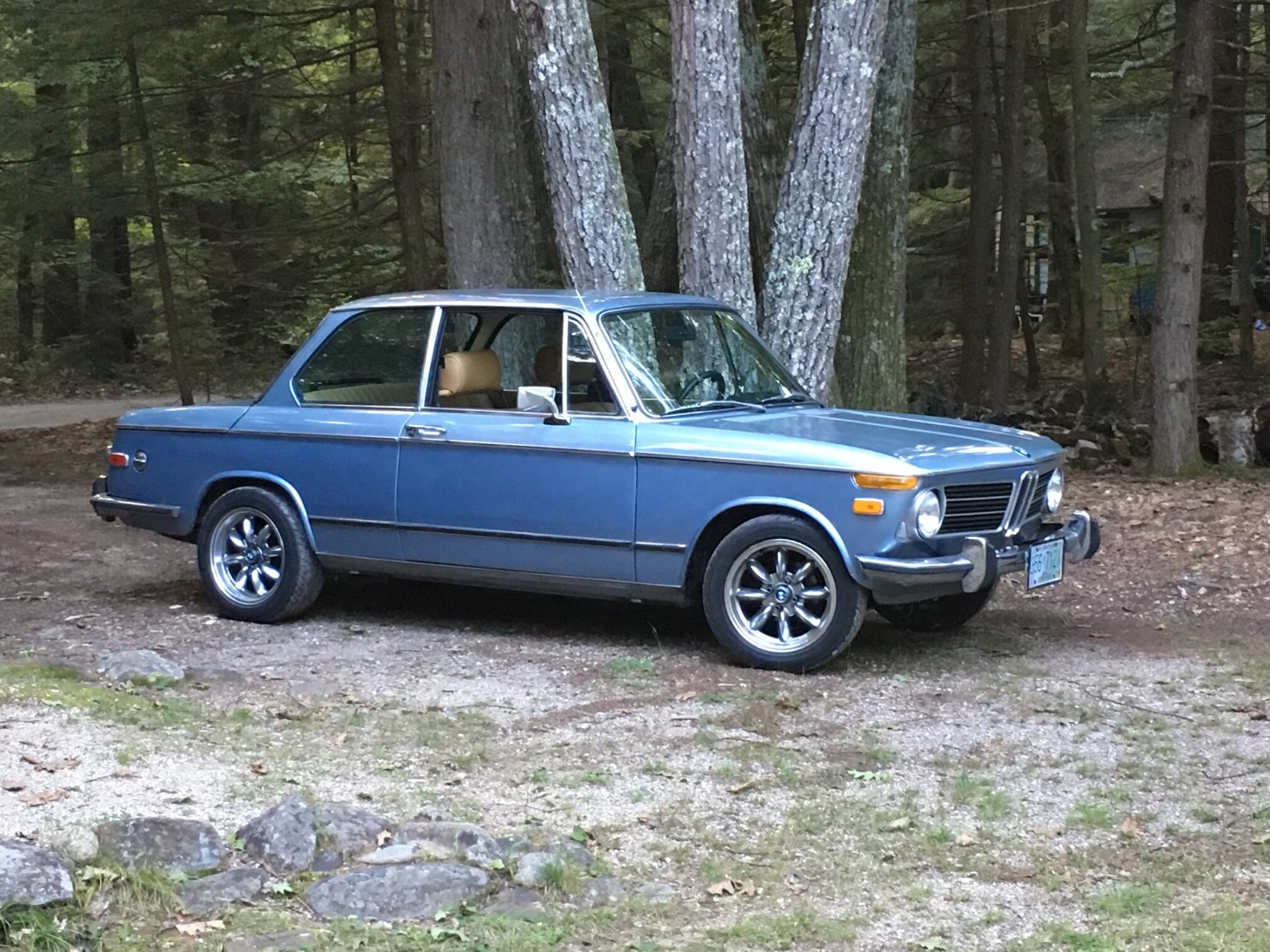
This is an essay written by David Hulick about the rebuilding process of his 1972 fjord blue 2002
Shut Up and Drive
by David Hulick
“Honey,” I started tentatively, “I need a hobby car. Something to fix up and make better.” The response came without hesitation, “Does this mean I finally get a hot tub?”
“Yes, of course it does!” was my inspired reply.
“Then get any damn car you want.”
Done deal.
After more than 25 years of blissful Mazda Miata ownership, it had dawned on me that something was missing. The red roadster was a blast to drive. It started every time. Nothing ever broke. In April, it starts right up and drives flawlessly until October. Repeat. Again and again and again. Change the oil annually. Replace tires every few years. Replace the timing belt every seven. No need to open the toolbox or even have tools, for that matter. Kind of fun to show it off as a one-owner, all original car that looks new. But it didn’t satisfy one particular itch.
It needed a companion that demanded wrenching and improvement. Something Iconic. Historic. Drivable. Parts available. Not crazy expensive. Easy to work on. Something I could identify with. Something I could point to and say, “I made it like that. It runs like it does because I cared enough to make an effort.”
I did the math and the answer was clear: Iconic + race history + affordable x fun squared = 2002.
Believe it or not, in March 1965, the Board of Directors at BMW was concerned that they would not be able to sell 100,000 of the proposed 2-door to repay the development cost. Why? Their car was expected to be priced higher than the competition. Their fears were unfounded. What they ended up with was a 10-year success that sold 862,000 copies! The car paid for the development of the 3- and 5-Series models that put BMW at the top of the performance sedan world. Company saved. This is truly an iconic car.
Race cred? Check. A private-entry 2002Ti won its class in the 1975 24-hour of LeMans, arguably the most challenging auto race of all, by out-lasting the more powerful Ford and BMW factory entries. It was a rallying and SCCA favorite. I wonder how often Paul Newman watched the roundies pulling away from him during his SCCA career in hot Datsuns. The 2002 is legendary for performance in a practical and simple package. Parts are available and relatively inexpensive. And it was manufactured in Munich, Germany, which is where my employer has its headquarters. So an homage to the organization that paid off my house and put my kids through college is a nice touch, too. There are lots of other old cars that appeal to me, but the 2002 is the one stood out above all the others.
Once I knew the car I wanted, there were many to choose from. Survivors, beaters, cream puffs, and everything in between. One beautiful Saturday I drove to Long Island to look at a
white 1974. I took tools and the owner let me take my time looking at it. I learned a lot, but it was just the beginning of my education. His car was a survivor. Not abused. Benign neglect would be a better description. Everything bone dry. Lubrication and maintenance were not part of this guy’s routine. The tires were ancient and rotten. There might have been bushing remnants underneath, but that is doubtful. My short test drive, in fact my first drive ever of a BMW, was scary. I left him a careful survey of what I’d found, and said, “Thanks, but no thanks.”
Frequent scans of Craig’s List followed. Eventually, a Fjord Blue 1973 caught my eye. It was the last of the roundies with the chrome bumpers and a factory sunroof, offered for sale by a shop in Texas. Advertised with no rust. It was worth cashing in some frequent flyer miles for a trip, which took place at the same time as an epic ice storm. The car was not perfect. No matching numbers here. Some floor rust had been corrected, but fenders, sub-mounts and shock towers were clean as could be. Respray in the original color resulted in an acceptable 10-foot paint job. The new interior was fine. The dash was not in tatters. It made a good impression. It was last titled in the state of Washington. So we talked back and forth. He agreed to a number of mechanical upgrades, including a 5-speed transmission, Bilstein shocks and an Ansa exhaust. Also new wheels and tires. Not a steal, but it wasn’t going to break the bank. And the hot tub had already been installed.
Three months later, in February 2015, my BMW showed up on the car carrier. And then my 2002 education started in earnest. First of all, the guy in Texas did everything I asked him to. But he did it as quickly as he could without any concern for workmanship. And that was after I sent him $100 for a pizza party to motivate his mechanics! Loose driveshaft bolts? Broken transmission mount? Improperly installed shocks? Shorted wires? Seriously? I can’t hold a grudge because unwittingly, he did me a favor. His team’s sloppiness did more for my mechanical education than anyone else ever did. He started me on a journey to find all of his crappy workmanship and then figure out how to correct it. My toolbox was used like never before. My mechanical aptitude was stretched thin. My mechanically-inclined friends feared my phone calls.
I kept a list of everything I did to the car. Fixing one thing inevitably uncovered two new problems. Many of the repairs were simple enough for me to handle, but I had to save others for my local mechanic. As nice as he is, he is not expert in the care of vintage BMWs, so we were both somewhat in the dark. The list grew to seven tightly spaced pages.
The car drove. For local country roads at 40mph it was fine. Starting was never a problem and it did not leave a cloud of blue smoke behind. This is a car that puts smiles on other people’s faces, too. I cannot stop for gas without meeting someone who wants to talk about the 2002. And almost every story ends with, “And I wish I had kept it...” At a car night at a local restaurant, an impeccably-dressed gentleman got out of his perfect Rolls Royce Corniche convertible and made a bee-line to my BMW so he could tell me how he had one in his youth. Wow. Was I flattered!
But looks aren’t everything. It was clear that my 2002 was not as peppy as it should be. I tuned and tuned: Plugs, cables, timing, vacuum, and carburetor. It got better. But not much. My 0 to 60 run at more than twenty seconds was painfully slow. Hills were a chore. I was chum for old VW Bugs. The motor just would not rev under load. Time to face the facts. The mill was dog- tired. When the dog won’t hunt, it is time to get a new dog.
Late last summer I drove to Dublin, NH to visit someone. There is a garage there that I’ve passed countless times during the last 30 years. AVA Restoration Services is in an old-school, red brick shop set back from the road. There are always old BMWs out front. And every time I spied a 2002 it spoke to me. So I showed up unannounced one day.
“Hi, I’m David,” I introduced myself, “You are one of the reasons I bought this car, and I’m hoping you will help me with it.”
After Alex Vogel and his crew finished eyeballing the 2002 like a long-lost friend, they were willing to give me some attention. The vibe was good! I explained that I wanted to do as much of the work myself as I could, but that I needed help. Over the winter, the motor had to be overhauled. My offer to Alex was that he would give me advice and I would buy all the parts from him. Second best deal I ever made, after the hot tub. Alex told me to pull the motor and take it to R&L Engines in Dover, NH.
Before doing that, I visited Leo at R&L. The shop was a motor-head candy store. Fantastic chromed, monster race engines sitting on crates waiting for pick-up. And here I am, wanting to bring him a dirty, little 2-liter 4-cylinder! He said he’d been working with Alex for decades and had overhauled many M10 motors for him. Jackpot. I had two experts in my corner. They got my approval to do whatever they thought best.
Taking the motor apart and pulling it from the car was kind of fun and at the same time highly informative. Everything was photographed, bagged, and tagged. R&L got the block, the old guts, the flywheel, the head and the intake manifold. I cleaned the rest and waited for spring.
There were many casualties. The head was warped, cracked and porous. Three strikes and it was in the trash. The camshaft and the valve train had given all they had to give. Trash. The oil pump wasn’t doing so much pumping anymore. That is just the start of a long list of parts that had to be replaced. Alex always came through with good parts for me. In March, the call came that the short block was complete. When I picked it up, Leo asked if I could deliver a lightened flywheel to Alex. I had just enough time to make it from the seacoast to Dublin that afternoon. That proved to be truly fortunate.
On the 90-minute drive with my overhaul investment riding in back, I began thinking about putting it back together. I had photos. I had bags and bags of tagged parts. I had the Haynes manual. But I didn’t have experience or confidence. I was having nightmares about ruining my new motor through innocent incompetence. Then came the inspiration. When I got to Alex’s garage, I asked him if I could build the motor in his shop under his supervision.
David Hulick, August 2018 Page 3
And when the motor was all built, sitting on its stand looking like a million bucks, I asked him, “Can I bring the car here, too, for the installation?”
With a smile, he said, “I was hoping you would think of that”.
The seven days in Alex’s shop was the experience I was hoping for, with access to tools, parts, sand-blast booth, paint -- and someone who could guide me through a quality M10 build. My labor contribution was about 80%, but a real professional was there to step in for the critical steps, and to correct my missteps.
As he walks by, glancing down at the M10 on the engine stand, not even breaking stride, “That motor mount is upside down.”
Simple enough, but think about what it would have been like with the motor swinging on the hoist, trying to figure out why it would not fit into the car.
“What’s this?” I asked about a short, dirty, rusty little clamp.
“That holds the wiring harness to the block. Clean it, blast it and paint it.”
“What’s this?” about another bracket.
“Don’t know, doesn’t belong on a 2002. Throw it away.”
As I assembled the accessories, Alex asked, “Where is your manifold-starter bracket?” “It didn’t have one,” I answered.
“Figures. Wanna go shopping?” He was as unimpressed with the other shop’s workmanship as I was, and at every step there were corrections and improvements. “Going shopping” meant going to the shed out back and combing through a wonderland of old parts to find what was missing. I did a lot of shopping, and because he had everything, the project didn’t stall once. With the bracket or brace or whatever located, after a trip to the parts cleaner, sand blaster, wire wheel and paint booth, I had a new part in hand. It was like magic.
Alex spec’d the motor, and he did it well. In addition zero-timing chains and pumps, he upgraded the motor to 2x oversized pistons to get a 10.5 compression ratio, Tii distributor with electronic ignition, Bosch blue coil, better plugs and cables, exhaust manifold from a Tii, a lightened flywheel and new clutch plus all of its hydraulic parts. It got new transmission seals
and a new, short-shift linkage. The 32/36 sequential carb I bought last year was replaced with a 38/38 progressive Weber. I spent a long time hogging out the intake manifold to match the bigger carb. He recommended a new Bosch starter and alternator, because the old ones were “knackered”. He had a nice, wrinkle finish, powder-coated valve cover to top it off. It took me an entire evening to carefully by hand scrape off the rock-hard, ceramic-like coating to reveal the raised stripes and BMW lettering.
My assumption that the motor would go into the
car in one day was naively optimistic. Of course it
took longer, because we stopped to fix everything
that was not “right”. That was fine because I knew the result would fly. Both R&L and Alex estimated that the Level 2 upgrade would produce 140hp. Think about it. 40% more than stock -- but probably 100% more than the dog-tired mill I had before! The anticipation was unbelievable. It fired up the first time within 5 seconds. No mistakes, no troubleshooting required. It sounded heavenly.
Alex told me to put 500 miles on it before bringing it back for a check-up and to change the break-in oil. He gave me a week. My usual 19-mile commute wouldn’t get me there. So I started crisscrossing the state of New Hampshire going west to go north and east to go south
on winding back roads and state highways. fear that my new motor would break!
Driving 140 miles every day quickly got me over the
Although restricted at first to 4,000 rpm, the dramatic performance upgrade put a permanent smile on my face. The old dog was a new dog, and all it wanted to do was play. Starts at the first hint of the key-twist. Snorts when you get on the gas. Jumps 1,000 rpm in the blink of an eye. Snicks from gear to gear. And gets 28 mpg. What a transformation!
As we progressed with the build, I noticed
that Alex was becoming more and more
engaged in the project. At the end, when I thanked him for his hospitality and support, he surprised me by replying, “Thanks for getting me back to the fun stuff I know so well.” It seems that both of us got gratification from this 2002 restoration.
This is the car I wanted when I was 18 back in 1973. It makes me feel like a kid every time I drive it. What has finally become “my car” has personal touches. There is a label under the
hood, made to resemble the factory stickers, recognizing the people who built the motor. The coolant overflow bottle is a Munich beer bottle as a tribute to the city where it was built. I bought that bottle in Munich especially for this car. It has VDO gauges from my first car in a console that I rebuilt from the base up. I still have the ball cap from the 1973 high school baseball team, and it now lives in the car. In the trunk there is a Düsseldorf, Germany license plate from the car my dad had when we lived there in the late 1960’s. Sure wish I could permanently mount it up front, but the local constabulary has a problem with that!
Being fortunate to have not one but two iconic sports cars, the drive is always more important than the destination, and it deserves my full attention every time. The “Fasten Seat Belt” warning on the dash has had a subtle change. It now reads “Shut Up and Drive”.
